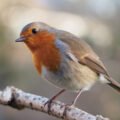Chicken General Information
Chicken, Gallus gallus domesticus, also known as domestic chicken or fowl, is a type of domesticated fowl, a subspecies of the red junglefowl (Gallus gallus). It is one of the most widespread domestic animals.
Chicken is a part of the Galliformes family. Chicken is one of four species in the genus Gallus; it is believed to have evolved from red junglefowl around 5 million years ago. Chicken is smaller than most domesticated birds and has a fleshy crest on its heads. They come in a wide variety of breeds and colours and there are different types used for food or egg production.

Chicken Classification and Nomenclature
The formal scientific name is Gallus gallus domesticus. The scientific family name for chickens is Phasianidae and they are also a member of the Phasianidae subfamily. Some scientists thought that They are related to other birds like turkeys but the latest studies show that these two birds have evolved from a common ancestor about 71 million years ago.
They have many relatives in wild like peacocks and pheasants but it’s hard to know if they are related or not because scientists haven’t sequenced their DNA yet. Other common names for chicken include Dominique, English rooster, game fowl, game hen, free-range poultry, and yardbird and among others.
Kingdom Animalia, Phylum Chordata, Class Aves, Order Galliformes, Family Phasianidae (gallinaceous birds), Genus Gallus, Species G. gallus. In 1758 Linnaeus gave it its scientific name. The name comes from Latin gallina (a hen), as does gallinaceous. In medieval Latin, gallina referred to an old female chicken and hence any old hen; hence also French poule for chicken. Galicia was a common diminutive of gallina, hence Fr.

Phylogeny and Evolution
All birds are thought to have evolved from dinosaurs around 150 million years ago. The modern chicken is believed to have descended from red jungle fowl, which itself may have been related to pheasants. Domestication of chickens began at least 8000 years ago and possibly as early as 10,000 years ago.
Archaeological evidence suggests that chickens were being used for cockfighting in Asia by 1200 BCE, and were also bred for their meat in China around 1000 BCE. By 600 CE chickens were being used as sacrificial offerings in parts of India. In Europe, chickens appeared more frequently after AD 400 but remained rare and exotic until 1500 or so when Portugal imported them from India and traded them throughout Europe with great success; some traders became rich off their Asian ventures!

Mating Behaviours
Chicken mating occurs in a social setting. A dominant rooster will stake out and protect a hen and her flock of chicks. The rooster will also display his prowess by fluffing up his feathers while strutting before interested hens to impress them with his size. After mating, fertilization occurs when eggs are released from the ovaries.
Hens will lay eggs once per day until they have a full clutch of about 11-15 eggs which she can take care of on her own for about twenty days until hatching occurs. If you are keeping chickens at home for meat or egg production you should separate your rooster from your hen by putting him in a smaller pen because if not you may end up with baby chicks!
Facts About Chicken
- Chickens are omnivores – meaning they will eat anything.
- Chickens have both male and female sex organs, but it is mostly for reproductive purposes.
- Female chickens are called hens. Male chickens are called roosters or cocks. Baby chickens that have not yet developed their adult feathers and sex organs are called chicks.
- Domesticated chickens can live more than 5 years!
- Chickens communicate by clucking and using over 20 different sounds to communicate with each other. The chicken’s specific behaviour signals when they’re angry or happy can be used to monitor them during their flock interactions. Some of these communications between animals help to describe an animal’s emotion as well as pinpoint when something is wrong in a group.
- Chickens love music!
Growth Patterns in Production Systems
Production systems that allow for slower growth rates tend to result in chickens with greater meat and egg yields later in life. There are trade-offs with slower growth and keeping birds healthy, as slower growth also increases disease risk. Broilers have traditionally been grown under high-density conditions; consequently, much of what we know about chicken production comes from studies of broiler chickens.
The best way to control infectious diseases is by restricting movement between flocks or pens and by maintaining good hygiene on farm premises. Hens are more susceptible than cocks to infectious diseases due to hormonal differences during rearing; immunity and other traits improve during adulthood because they become non-laying hens.

